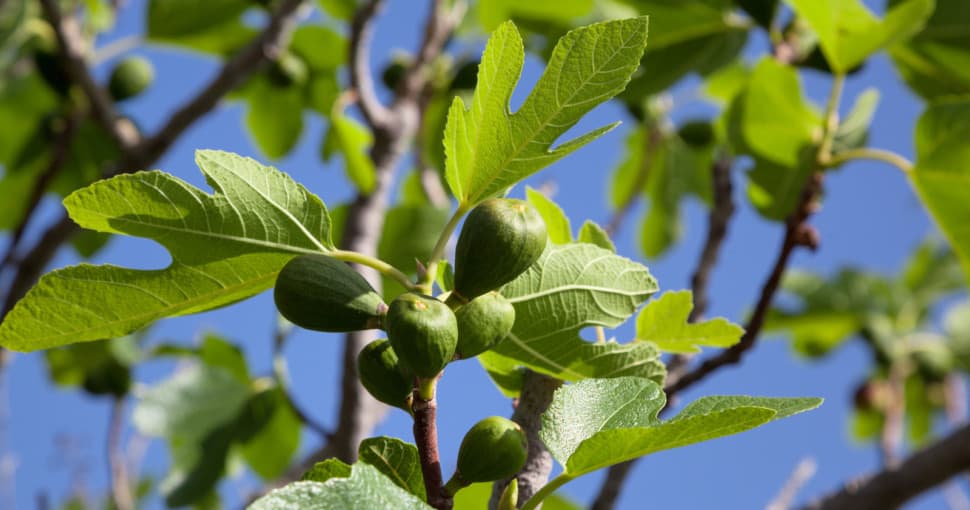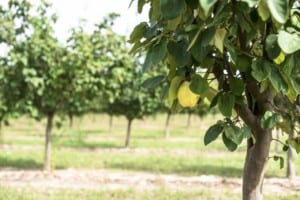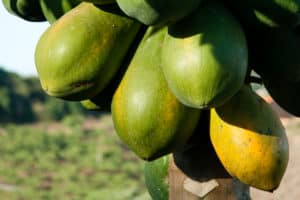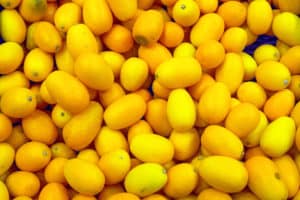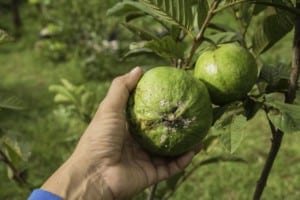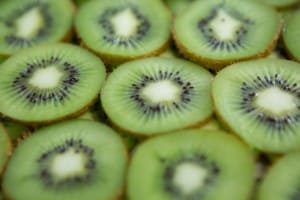Do you harbor an undeniable love for figs in your heart? Well, you will be immensely pleased to know that you can easily grow a wide variety of prolific Fig Trees in your garden. Read on to learn everything you need to know about different types of Fig Trees!
Contents
- 1. Italian Honey Fig
- 2. Alma Fig
- 3. Becnel’s Italian Black Fig
- 4. Black Mission Fig/Beers Black Fig/Franciscan Fig
- 5. Brown Turkey Fig/Texas Everbearing Fig/Negro Largo Fig
- 6. Celeste Fig
- 7. Hardy Chicago Fig
- 8. Conadria Fig
- 9. Florea Fig
- 10. GE Neri Fig
- 11. Kadota Fig Tree
- 12. Yellow Long Neck Fig
- 13. Ischia Fig
- 14. Little Ruby Dwarf Fig
- 15. LSU Gold Fig
- 16. Olympian Fig
- 17. Smith Fig/Becnel’s Smith Fig
- 18. Strawberry Fig
- 19. Adriatic Fig Tree
- 20. Caprifigs
- 21. Purple Genca
- 22. Smyrna Fig Tree
- 23. San Pedro Fig Tree
- 24. Desert King Fig Tree
- 25. Black Jack Fig
- 26. Brunswick Fig Tree
- 27. Petite Negra/Little Black Fig
- 28. Violette de Bordeaux Fig
- 29. White Marseilles Fig
- 30. Sierra Fig
- 31. Calimyrna Fig
There are more than 800 varieties of Fig Trees in existence. These trees are part of the mulberry (Moraceae) family. Many of these trees grow in tropical climates, as they thrive in extreme heat and can be intolerant of low temperatures. However, some varieties are exceptionally cold-hardy and drought-tolerant, making them the ideal plants for US soil.
Some fig tree varieties are grown for their delectable, juicy, and sweet fruits, while others are grown for their large, attractive leaves. In the US, many people grow fig trees for their fruits. Figs are popularly used in jams and other preservatives and are also eaten as is.
Perhaps the best part about growing Fig Trees in your garden is that they bear prolific crops twice a year. However, if you choose to grow them as strictly indoor plants, they will rarely bear fruits. If you want to plant them at home, make sure to cultivate them in the accurate hardiness zones (typically eight or lower) for prolific crop growth.
However, if you happen to live in an area where the temperature gets too cold during winters, make sure to plant your tree in a container and protect it from the frost by keeping it indoors. You can plant your fig tree outdoors during the early months of spring to late fall and enjoy its delicious fruits.
So, without any ado, let’s explore the most popular Fig Tree varieties!
1. Italian Honey Fig
- Ficus carica ‘blanche’
- Height: 8-10 ft
Italian Honey Fig is a small-sized, fruit-bearing, self-pollinating tree that you can grow in a container as well. It produces pale chartreuse-hued figs with luscious, honey-sweet, pale amber flesh. It’s a drought and heat-tolerant tree, but if it’s dry for too long, it might suffer from minor food drop. When planting the tree, space it at least 8 to 10 feet apart to leave room for root growth.
2. Alma Fig
- Ficus carica ‘alma’
- Height: 12-15 FT
Alma Fig Tree is a relatively new Fig Tree variety and is considered to produce one of the tastiest figs. It’s typically found growing in Mexican regions and ripens later in the season. It produces medium-sized, yellow-hued figs with small seeds in them. The fruits might also have spotting on them. If you plan to plant this tree outdoor, make sure to bring it indoors during colder months.
3. Becnel’s Italian Black Fig
- Ficus carica ‘becnel’s italian black’
- Height: 10 ft
Originally from the Becnel family nurseries in southeastern Louisiana, Becnel’s Italian Black Fig Tree is an heirloom small-sized tree that produces glossy, black-skinned fruit with deep red flesh. The figs ripen in mid-season, but an old Italian Black Fig can produce crop earlier while a young one can produce a late crop in mild winter climates. It grows well in deep organic mulch and full sun.
4. Black Mission Fig/Beers Black Fig/Franciscan Fig
- Ficus carica’ black mission’
- Height: 10-30 ft
Black Mission Fig Tree is a relatively large Fig Tree variety. When taken care of appropriately, this tree can live for a long time. Originally from California, Black Mission produces high-quality, juicy, dark purple-skinned figs with pink pulp. Like many other fig varieties, this tree produces fruit twice a year.
5. Brown Turkey Fig/Texas Everbearing Fig/Negro Largo Fig
- Ficus carica ‘brown turkey’
- Height: 20-30 ft
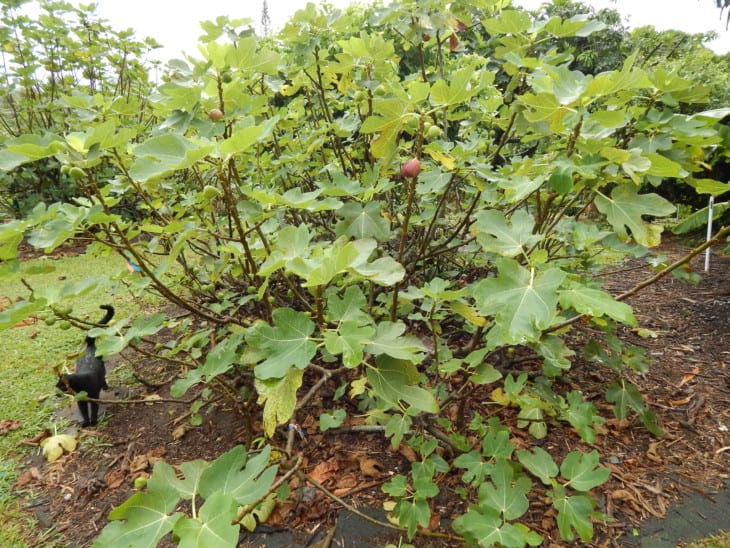
Brown Turkey Fig Tree can grow in USDA 7 to 11. This cold-hardy tree produces delicious, sweet figs with rusty red to purple skins and pink flesh. Mature trees have large, slightly hairy leaves and non-showy flowers that bear fruits at the end of summer. Known for its extensive growth, this tree thrives in rich, well-draining soil and full sun to partial shade.
6. Celeste Fig
- Ficus carica ‘celeste’
- Height: 10 ft
Celeste Fig can grow in USDA 6 to 9, but it thrives in full sun to partial shade in well-drained, rich soils. This cold and heat-tolerant tree is widely found across the Southeastern parts of the US. It produces large, lobed leaves, small flowers, and sweet figs with a brown-purple hue. It’s a self-fertile tree, making it an excellent choice for people who want to cultivate figs.
7. Hardy Chicago Fig
- Ficus carica’ chicago hardy’
- Height: 10-15 ft
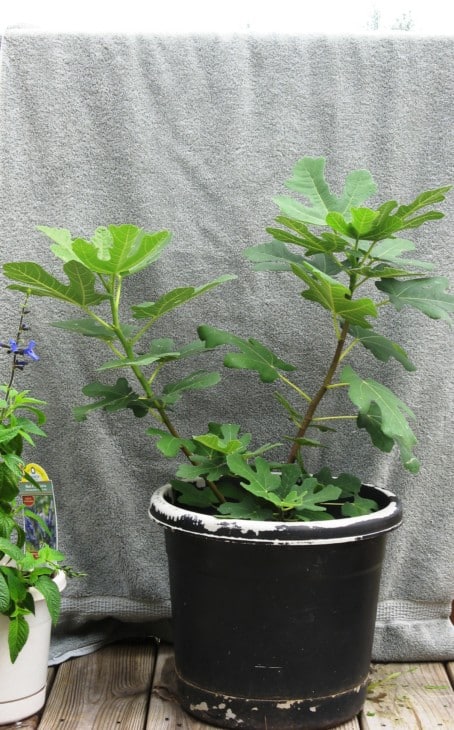
Hardy Chicago Fig is one of the hardiest common Fig Tree varieties; its branches can endure temperatures as low as 10°F. It yields sweet-tasting, soft-skinned fruits twice a year, with a small crop in spring and the main crop in fall. It thrives in moist, rich, well-draining soil and full sun.
8. Conadria Fig
- Ficus carica ‘conadria’
- Height: 10 ft
Conadria Fig is an average-sized Fig Tree known to produce prolific crops every year. This self-pollinating tree produces large thin-skinned, green-hued figs that turn light greenish-yellow when ripe. The fruit is resistant to spoiling and splitting, unlike many fig varieties. This tree thrives in consistently moist, well-drained, rich soils and full sun to part shade.
9. Florea Fig
- Ficus carica ‘florea’
- Height: 8-12 ft
Florea Fig is a cold-hardy Fig Tree that produces early fruit. The fruit is brown to purple-hued with amber flesh. It needs at least 8 hours of direct sunlight to thrive and bear fruits. It grows well in mildly acidic, moist, well-drained, rich soils. It’s an excellent choice for colder regions with shorter seasons.
Top of Form
10. GE Neri Fig
- Ficus carica ‘generi’
- Height: 10 ft
GE Neri Fig yields exceptionally large, purple-skinned figs with sweet, reddish flesh. This is an Italian Fig Tree that is relatively new to the US. This drought-tolerant tree grows well in deep organic, well-drained, moist mulch and 8 hours of direct sunlight. It’s cold-hardy in USDA zone 7 to 9.
11. Kadota Fig Tree
- Ficus carica’ kadota’
- Height: 30 ft
Kadota Fig Tree is a lofty and tall Fig Tree, well-known for its gorgeous fruit with yellowish-green skin and a purplish pulp. Kadota figs are seedless, which makes them ideal for making preserves. This tree can withstand cold weather and easily thrives in hardiness zones 5 and 6.
12. Yellow Long Neck Fig
- Ficus carica’ yellow long neck’
- Height: 10 ft
Yellow Long Neck Fig can grow in USDA 7 to 9. It produces a large, round, yellow fig with sweet, amber-hued flesh. It was discovered at the San Diego Botanic Gardens. This tree grows well in direct sunlight and partial shade during the day. It needs well-drained, rich, moist soil to thrive.
13. Ischia Fig
- Ficus carica ‘ischia’
- Height: 10 ft
Also known as Black Provence and blue Ischia, Ischia Fig is a vigorous tree that often bears a breba crop. It produces a healthy crop of medium to small, pear-shaped black figs with noticeable ribs and a blue bloom. The sweet, rich flesh is purplish-red. Ischia Black figs have an open eye. This tree thrives in full sun to part shade.
14. Little Ruby Dwarf Fig
- Ficus carica’ little ruby’
- Flowering in:
- Height: 3-4 ft
A hardy, dwarf Fig Tree, Little Ruby Dwarf Fig is an excellent choice for patios. It produces medium-sized, sweet, red-hued figs with strawberry-colored flesh. Developed by Denny McGaughy, Little Ruby is a compact and reliable tree also grown as a bonsai specimen. It grows well in direct sunlight and we;l and well-drained, moist, acidic soils.
15. LSU Gold Fig
- Ficus carica’ lsu gold’
- Height: 3 ft
LSU Gold Fig is a fast-growing, compact tree that produces a prolific crop. Introduced by Louisiana State University, this tree produces large, golden-hued figs with a ruby blush. These figs gave a light red pulp with a rich, sweet flavor. This tree thrives in well-drained, moist loams and full sun.
16. Olympian Fig
- Ficus carica ‘olympian’
- Height: 10 ft
Discovered in Olympia, the Olympia Fig Tree yields large, purple-skinned fruits with a sweet red to purple flesh. It’s a cold-hardy tree that produces breba crop that ripens as early as May. It’s a distinct cultivar of the Fig Tree that grows well in full sun and deep organic mulch.
17. Smith Fig/Becnel’s Smith Fig
- Ficus carica ‘smith’
- Height: 10 ft
Smith Fig is an heirloom Louisiana Fig Tree introduced by Becnel Nursery. It produces large, yellow fruit with a sweet, red flesh. The fruit has an eye that exudes honeydew. This fig is one of the most sought-after in southeastern gardens. This tree thrives in well-drained, acidic, organic mulch and full sun.Top of Form
18. Strawberry Fig
- Ficus carica ‘strawberry’
- Height: 8 ft
Also known as Ischia Green, Strawberry Fig grows well in drier Southern and Southwestern climates as well as cooler climates. It can grow in USDA 7 to 9. It produces prolific crops of medium to large, dark green, flattened to rounded fruit with bluish-purple skin, white flesh, and dark purple pulp. This Fig Tree will thrive in full sun to part shade and mildly acidic, well-drained soils.
19. Adriatic Fig Tree
- Ficus carica ‘adriatic’
- Height: 10-13 ft
Native to the Mediterranean region, Adriatic Fig Tree is a self-pollinating specimen that can grow in various weather conditions. It produces light green fruits with pink flesh. The figs are incredibly sweet. They ripen during June and August. This tree grows well in organic mulch and full sun to partial shade.
20. Caprifigs
- Ficus carica sylvestris
- Height: 3 ft
This dwarf, compact Fig Tree produces edible male figs. Native to the South Western parts of Asia and South European parts, this tree beats plenty of tiny flowers and thick-skinned, pear-shaped figs. These figs aren’t juicy and can be semi-hollow. This small tree produces ripe crops thrice a year.
21. Purple Genca
- Ficus carica purple genca
- Height: 13 ft
Purple Genca is a medium-sized Fig Tree that produces abundant foliage and large fruits known as the lack Spanish Fig or Purple Genca. This massive fig has dark purplish skin and reddish, sweet flesh. This tree is self-fertilizing and can be easily grown in homes. It thrives in full sun and partial shade.
22. Smyrna Fig Tree
- Ficus carica smyrna
- Height: 33 ft
This relatively tall-sized Fig Tree is typically pollinated by the Caprifigs. Smyrna Fig Tree produces soft, delicious figs that have a striking greenish-yellow hue and are rich in fiber content. This tree bears female flowers only. This tree grows well in well-drained, organic mulch and full sun to partial shade.
23. San Pedro Fig Tree
- Ficus carica san pedro
- Height: 10 to 30 ft
San Pedro Fig Tree is a distinctive Fig Tree because it yields two unique kinds of crops yearly. The first crop is the Breba crop, which thrives on leafless, mature wood and doesn’t need pollination. The second crop grows on new wood and requires male flowers for successful pollination. If it doesn’t pollinate, the fruit will fall from the tree.
24. Desert King Fig Tree
- Ficus carica desert king
- Height: 25 ft
Desert King Fig Tree is ideal for the Pacific Northwest climate since the figs hold up well in the rainy season. This tree produces a prolific mid-summer crop of mildly yellow-green hued figs with a blazing red flesh. This is a low-maintenance tree that thrives in full sun. It features large, dark green, lobed leaves and unimpressive flowers.
25. Black Jack Fig
- Ficus carica’ black jack’
- Height: 6-8 ft
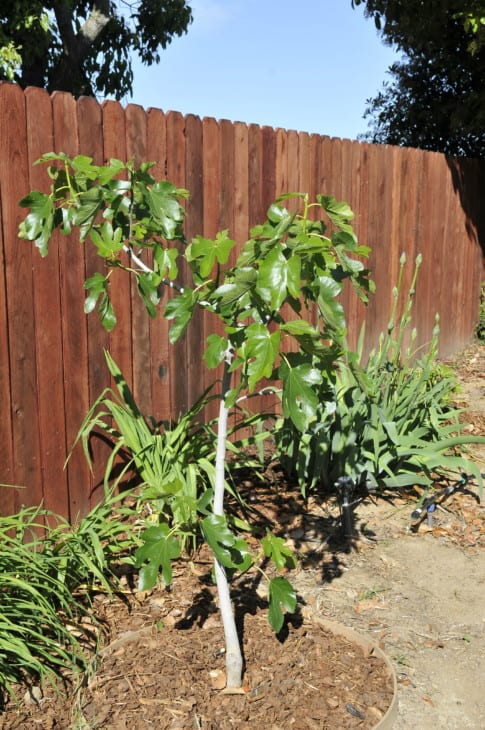
Black Jack Fig is a semi-dwarf tree that can be planted straight into the ground or in a container. It’s a relatively low-maintenance and hardy tree that can thrive in partial shade, but it needs full sun to bear a prolific crop. It thrives in USDA zones 7 to 10. This drought-tolerant tree produces large figs with a pink pulp.
26. Brunswick Fig Tree
- Ficus carica ‘brunswick’
- Height: 10-12 ft
Also known as Magnolia, Brunswick Fig Tree is a medium-sized Fig Tree that produces medium or large-sized, purple figs that have amber or pink flesh. These figs are typically used for preserving. This tree grows well in USDA zones 7 to 9. It is hardy to 5 degrees Fahrenheit. This tree thrives in full sun to partial shade.
27. Petite Negra/Little Black Fig
- Ficus carica ‘petite negra’
- Height: 3-4 ft
Little Black Fig or Petite Negra is a small-sized Fig Tree with a compact crown. This tree or shrub is typically grown in planters as it is quite easy to prune. It’s also hardy to zone 7. If you decide to grow it in a container, move it to a sheltered area or indoors in winter. It’s a self-pollinating tree that produces medium-sized, deep purple-black figs.
28. Violette de Bordeaux Fig
- Ficus carica ‘violette de bordeaux’
- Height: 6-10 ft
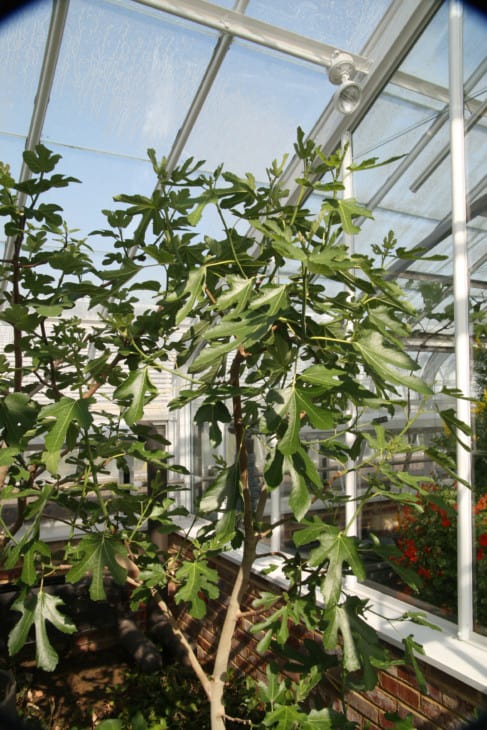
Also known as Negronne, Violette de Bordeaux Fig is a spreading yet relatively smaller Fig Tree. It grows well in USDA zones 5 to 9, but it will need appropriate winter protection in zones 5 and 6. It produces blackish-purple fruits with reddish-purple pulp. These figs are well-known for their lovely fragrance and incredibly rich, sweet flavor.
29. White Marseilles Fig
- Ficus carica ‘white marseilles’
- Height: 10-12 ft
White Marseilles Fig was a favorite of Thomas Jefferson. He is believed to have discovered it in France and introduced it to the US. This Fig Tree variety is quite well-suited for northern climates. You can grow it in USDA 6 to 9. It produces greenish-yellow fruits with sweet yellow flesh.
30. Sierra Fig
- Ficus carica ‘sierra’
- Height: 23-33 ft
Sierra Fig Tree is a relatively new variety introduced by University of California Cooperative Extension breeders. This tree produces sweet and mild figs with a yellowish-green exterior skin and a soft, almost creamy interior. This tree can be planted for both fresh and dried figs.
31. Calimyrna Fig
- Ficus carica’ calimyrna’
- Height:
Calimyrna is a large, deciduous, typically disease-free shrub with well-rounded, deeply lobed, dark green leaves, insignificant flowers, and edible, greenish-yellow fruits with amber flesh. If you want to encourage fig production, pinch out growing points of side shoots. Plant the tree in moist, well-drained, rich soils and sunny to partially shaded area.

